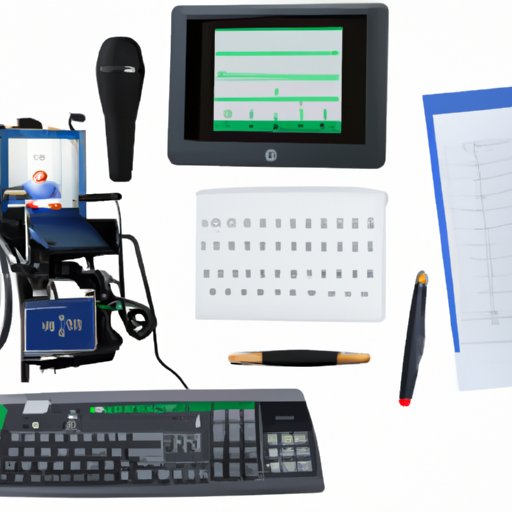Overview of Assistive Technology in the Classroom
Assistive technology (AT) is a broad term that refers to any type of device or system which helps individuals with disabilities access educational opportunities. AT includes both “low-tech” tools such as pencil grips and rulers, as well as “high-tech” tools such as voice recognition software and text-to-speech programs. The use of AT in the classroom can help students with disabilities participate more fully in their education and reach their full potential.
Definition of Assistive Technology
According to the National Center on Accessible Educational Materials, assistive technology is defined as “any item, piece of equipment, or product system, whether acquired commercially off the shelf, modified, or customized, that is used to increase, maintain, or improve functional capabilities of a student with a disability.” This definition encompasses a wide range of products, from low-tech tools such as pencil grips and rulers to high-tech tools such as voice recognition software and text-to-speech programs.

Benefits of Using Assistive Technology in the Classroom
The use of assistive technology in the classroom has many benefits for students with disabilities. According to a study conducted by the American Institutes for Research, “students who use AT have been found to have increased academic achievement, improved self-esteem, increased independence, and greater access to information.” AT can also help create a more inclusive classroom environment by allowing students with disabilities to participate more fully in their education.

Types of Assistive Technology Available for Use in the Classroom
There are four main types of assistive technology available for use in the classroom: visual aids, audio aids, mobility aids, and communication aids. Visual aids include items such as magnifiers, video magnifiers, and CCTV systems. Audio aids include items such as hearing aids, FM systems, and amplified telephones. Mobility aids include items such as wheelchairs, walkers, and canes. Communication aids include items such as speech-generating devices, augmentative communication devices, and alternative keyboards.

Examples of Assistive Technology Used in the Classroom
Voice recognition software is a type of assistive technology that allows students to control their computers and other devices using only their voices. Text-to-speech programs convert written text into audible speech, making it easier for students to access written materials. Screen readers are software programs that read aloud what is displayed on the computer screen, allowing students to access digital content. Adaptive keyboards are designed to make typing easier for those with physical impairments. Electronic note taking devices allow students to record lectures and take notes at the same time.
How to Implement Assistive Technology in the Classroom
When implementing assistive technology in the classroom, it is important to identify the appropriate technology for each student. Teachers should assess each student’s individual needs and determine which type of assistive technology will best meet those needs. Training teachers and students on the use of AT is also essential. Establishing support networks and providing resources to help students and teachers use AT effectively can further facilitate successful implementation.
Challenges and Opportunities with Assistive Technology in the Classroom
One of the biggest challenges associated with the use of assistive technology in the classroom is cost. AT can be expensive, and many schools lack the funds to purchase the necessary devices and software. Additionally, there may be accessibility issues, as not all AT is compatible with all devices and operating systems. Despite these challenges, the use of AT in the classroom can provide many benefits, such as increased academic achievement, improved self-esteem, and increased independence.
Conclusion
Assistive technology can be a valuable tool in helping students with disabilities access educational opportunities. AT can help students participate more fully in their education and reach their full potential. There are many types of AT available for use in the classroom, including voice recognition software, text-to-speech programs, screen readers, adaptive keyboards, and electronic note taking devices. While there are some challenges associated with the use of AT in the classroom, such as cost and accessibility issues, there are also many potential benefits. With proper implementation and training, assistive technology can be an effective tool for helping students with disabilities achieve success in the classroom.
(Note: Is this article not meeting your expectations? Do you have knowledge or insights to share? Unlock new opportunities and expand your reach by joining our authors team. Click Registration to join us and share your expertise with our readers.)
